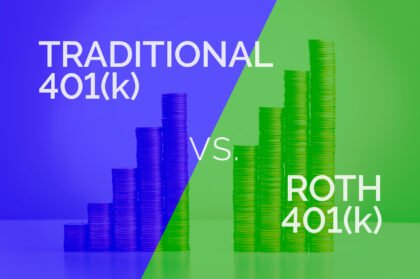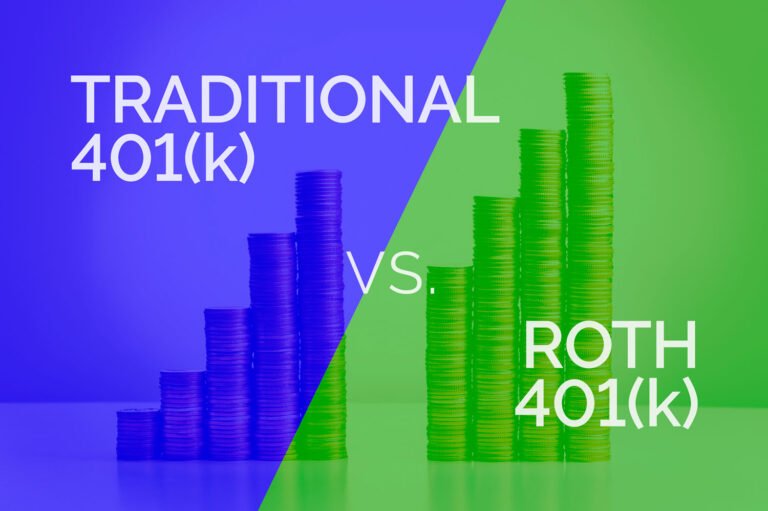Table of Contents
The Allure and Complexity of Incentive Stock Options
Imagine this: You’ve just received an email from HR with your new compensation package. Alongside your salary and bonus, you see something unfamiliar—Incentive Stock Options (ISOs). You feel excited, maybe even a bit flattered. But almost instantly, that excitement mixes with confusion. What exactly are ISOs, and how can they impact your financial future?
You’re not alone in feeling unsure. Incentive Stock Options are a common yet often misunderstood part of equity compensation. They can represent significant wealth—especially for those in tech or high-growth industries—but only if you know how to handle them wisely.
If you’re thinking about retirement, understanding your ISOs is more important than ever. Timing, taxes, and strategic decisions all play a role in maximizing their value. This article will demystify ISOs, explain their tax implications, and help you build a plan for retirement that includes them.
Decoding the Basics: What Exactly Are Incentive Stock Options?
Incentive Stock Options give you the right (but not the obligation) to purchase company stock at a fixed price—called the exercise price or strike price—within a certain time window. That price is usually set on the grant date, which is when the options are awarded.
ISOs differ from Non-Qualified Stock Options (NQSOs), especially when it comes to taxes. While NQSOs are taxed as ordinary income upon exercise, ISOs offer the potential for long-term capital gains treatment. More on that soon.
Let’s break down a few essential terms:
-
Grant Date: When the company officially gives you the options.
-
Vesting Schedule: When you gain the right to exercise your options. This might be all at once (cliff vesting) or gradually over time (graded vesting).
-
Exercise Price: The set price at which you can buy the stock.
-
Fair Market Value (FMV): What the stock is worth on the open market.
-
Expiration Date: The deadline for exercising your options, often 10 years from the grant date.
Here’s a simple example:
You’re granted 1,000 ISOs at a $10 strike price. Five years later, the stock is trading at $50. You can now exercise the options for $10,000, then potentially sell them for $50,000. But taxes and timing matter—a lot.
The Two-Step Process: Exercising and Selling Your ISOs
Step 1: Exercising Your Options
Exercising means buying your company stock at the strike price. Sounds easy, right? But knowing when to do it can be tricky.
Here are a few things to consider:
-
Your company’s financial health
-
The stock’s current market value
-
How close you are to the expiration date
-
Your cash flow and liquidity
To exercise, you’ll notify your employer and pay the exercise price. You can use:
-
Cash on hand
-
A brokerage account
-
A margin loan (with caution—this increases risk)
Step 2: Selling Your Acquired Shares
Once you’ve exercised, you own the shares. Now you can sell them—either right away or after meeting certain tax-related holding periods.
Some strategies include:
-
Selling all your shares immediately (to lock in profits)
-
Selling in smaller tranches (to spread out income and manage tax impact)
-
Holding for long-term capital gains treatment
The strategy depends on your financial goals and tax situation.
Navigating the Tax Landscape: A Critical Consideration
The Magic of ISOs: Potential Tax Advantages
One reason people love ISOs? They can be taxed at long-term capital gains rates instead of ordinary income. That means potentially lower taxes on your profits.
To get this favorable treatment, you must meet two requirements:
-
Hold the stock at least two years from the grant date
-
Hold the stock at least one year from the exercise date
This is called a qualifying disposition. If you sell early, it’s a disqualifying disposition, and you’ll owe ordinary income tax on the “bargain element”—the difference between FMV and the exercise price at the time of exercise.
Example:
-
1,000 ISOs exercised at $10
-
FMV at exercise: $50
-
Bargain element: $40,000
-
If sold immediately: $40,000 taxed as ordinary income
-
If held for qualifying disposition: entire $40,000 taxed as long-term capital gain
That tax difference can be massive.
The Alternative Minimum Tax (AMT): A Potential Pitfall
Here’s where it gets complicated.
ISOs can trigger the Alternative Minimum Tax, a parallel tax system meant to ensure high earners pay a minimum amount.
The AMT counts the bargain element as income—even if you don’t sell the stock. So, you might owe tax on gains you haven’t actually received in cash.
How can you manage this?
-
Time your exercise late in the year so you have a clearer picture of your income.
-
Work with a tax professional to model AMT exposure before exercising.
-
Consider smaller, staggered exercises to stay under AMT thresholds.
-
Track your AMT credits—they may be reclaimable in future years.
Disqualifying Dispositions: Understanding the Consequences
If you sell the stock before meeting the holding periods, it’s a disqualifying disposition.
You’ll owe ordinary income tax on the bargain element. Any additional gain beyond that may be taxed as capital gains—but not at the lower long-term rate unless you’ve held the stock for over a year.
That’s why it’s critical to:
-
Keep meticulous records of grant and exercise dates
-
Monitor when your shares become eligible for long-term tax treatment
Strategic Planning with ISOs for Retirement
ISOs can be a powerful part of your retirement strategy—but only if you use them wisely.
Integrating ISOs into Your Retirement Plan
Don’t treat your ISOs as “extra.” They’re part of your overall financial picture. That includes:
-
401(k)s
-
Roth IRAs
-
Brokerage accounts
-
Real estate or pensions
You don’t want to bet your entire future on one company’s stock. Instead:
Smart ISO Retirement Moves:
-
Diversify away from concentrated stock holdings.
-
Use ISO gains to fund retirement accounts.
-
Build liquidity for future tax bills.
Decision-Making in Your 45–65 Age Range
As retirement nears, your ISO decisions shift from aggressive growth to risk management.
You’ll want to:
-
Evaluate the risk of holding company stock versus selling
-
Factor in taxes before and after retirement
-
Prepare for changes in income, including Medicare surcharges and tax bracket shifts
Also, leaving your job? You usually have 90 days to exercise your ISOs before they expire. Don’t miss that window.
Working with a Financial Planner
This is where a good planner shines. They can help:
-
Model various exercise scenarios
-
Project your AMT and capital gains tax exposure
-
Incorporate ISO proceeds into your broader retirement income plan
-
Balance risk and opportunity
Real-World Considerations and Potential Pitfalls
Company Performance and Stock Volatility
Remember: ISOs are only valuable if your company’s stock goes up. A downturn can erase your gains—or leave you holding worthless options.
Liquidity Constraints
You might not be able to sell your shares immediately due to:
-
Blackout periods
-
Lack of a public market (in private companies)
-
Cash needs for exercising
Be prepared with backup funding options or a staged approach.
Understand Your Company’s Rules
Not all plans are the same. Read your stock option agreement carefully. Watch for:
-
Expiration timelines
-
Restrictions on transferring or selling shares
-
Special terms triggered by layoffs or early retirement
Professional Advice Is Essential
ISOs can be complex and carry high stakes. Always loop in your:
-
Financial advisor for big-picture strategy
-
Tax advisor for AMT modeling and filing support
In Conclusion: Empower Your Financial Future with ISO Knowledge
Incentive Stock Options can be a game-changer when you understand how they work. With proper planning, they can fund your retirement dreams, reduce your tax bill, and provide long-term wealth.
But it takes more than luck—you need a smart strategy, expert advice, and a clear understanding of how ISOs fit into your financial life.
Take charge, stay informed, and lean on professionals who can help you make the most of your ISOs. Your future self will thank you.


